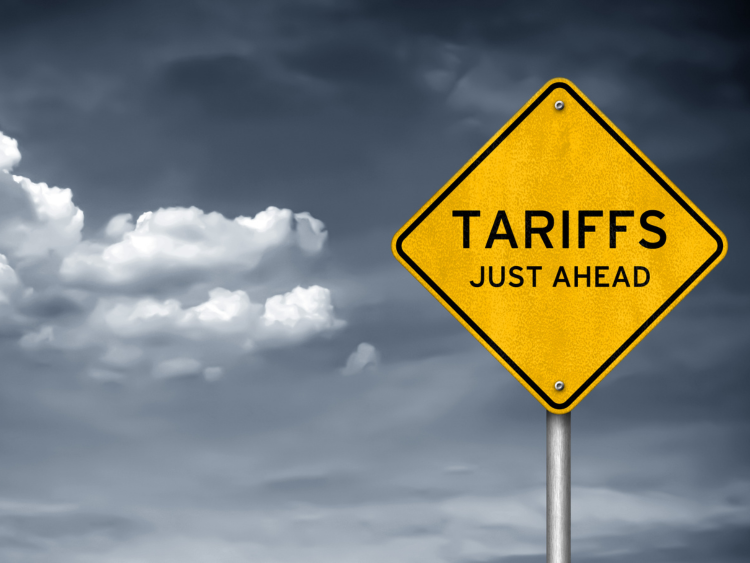Government/Policy

Leibowitz: Thoughts About Worker-Centered Trade Policy
Written by Lewis Leibowitz
November 20, 2022
The Biden administration has, from its early days, presented a “worker-centered” trade policy. Katherine Tai, the US Trade Representative (USTR), has used that term consistently. What does that mean exactly?
The “worker-centered” narrative includes, as is common in most policy debates, addressing the disparate impact on minorities and the disadvantaged. When a factory closes, those worst off tend to suffer more than the well off. The favorite target is cheap imports from developing countries featuring low wages and inferior worker rights.
Some industries have declined in the United States, and when that happens workers (and voters) want to blame someone other than themselves. But the reality is usually more complicated.
![]()
In October 2021, the USTR’s office wrote to the US International Trade Commission (ITC) requesting a report on the impact of trade flows and trade policy on US workers.
Last week, the ITC released a 253-page report on that subject, entitled “Distributional Effects of Trade and Trade Policy on US Workers.” The general conclusion of the report was that “old” trade policy measures did not sufficiently address the impact of trade on workers, especially the disparate effects on people of different race, ethnicity, gender, and economic status.
I think there are four basic types of trade impacts on workers.
First, trade flows can change due to external factors (changing consumer tastes, new and better products, etc.). These market changes affect workers. Increased imports increase pressure on domestic industries competing with those imports. The domestic industry must then adapt or shrink.
Second, government trade policy decisions affect workers (both here and abroad). Import tariffs and quotas affect workers. In the short term, workers compete directly with imports that become more expensive or shrink in volume. Demand for the domestic product tends to increase, leading to higher prices.
Third, trade policy decisions have collateral effects that affect workers. When the prices of “intermediate” products like steel and aluminum go up through trade restrictions, workers in downstream industries suffer because the competitive pressure moves down to the next level (fabrication, consumer goods, cars and trucks, etc.) Tariffs and quotas on steel, for example, cost jobs in downstream industries that use steel because manufacturing moves offshore.
Fourth, trade retaliation affects workers in export-oriented industries. The retaliation against US exports in the wake of the Section 301 tariffs on China is an example of this impact.
The ITC study explored these impacts. The dominant theme of the report was that there were disparate impacts. But there were few ideas about how to deal with those problems.
Global trade liberalization benefits low-wage workers outside the US, and it hurts low-wage workers in the US. That is the genesis, many agree, of the current hostility to trade liberalization. The benefit to foreign low-wage workers is likely to be greater than the harm to US low-wage workers. But that is difficult to measure. In any event, US politicians are understandably less concerned about foreign benefits than about US harm.
All that is fair enough. There is a steady undercurrent implicit in the “worker-centered” policy space: the best way to center US trade policy on workers is to keep imports out. The Trump administration clearly sought to help workers by reducing imports. The Biden administration does not want to be seen as reversing that goal.
At first glance, tariffs and quotas seek to keep workers in targeted industries employed, at least until the next election. Removing them would send a signal that the new administration would revert to the former policy. So these barriers to trade were kept.
Looking deeper, however, neither administration has reversed the trend toward increased global trade. Measured by value of imports and exports, US trade flows have grown steadily (with the glaring exception of the pandemic year of 2020). Our trade deficit has grown too, from $1.02 trillion in 2017 to $1.34 trillion in 2021. (Again, 2020 was the only exception—pandemics and recessions are effective ways to reduce the trade deficit.) The 2022 trade deficit is on track to move up to a new record of $1.5 trillion.
But back to workers. Those workers in import-competing industries need help from two principal sources. By far the most important is a dynamic and growing private economy that will value workers more because they are more important.
Workers depend on management to improve products and production methods. Management depends on workers to improve productivity and adapt technology. Better products lead to better financial results. None of these factors is all-important, but all are important.
Government is a second important source of help, especially for those at the lower end of the wage scale. Here, the track record of government assistance is, frankly, weak. Trade Adjustment Assistance is not aimed at improving worker productivity at a current job. It is rather to help laid off workers get new jobs in other industries.
Democrats think TAA should be expanded. Republicans think it doesn’t work. But either way, it does not preserve the traditional jobs lost to low-wage import competition.
Unemployment is historically low right now. But we are facing a changing work force. The workers who have trouble finding new employment are stuck in places that are declining, or they don’t have the skills they need. They shouldn’t need to prove that imports caused their problems. Labor force participation as a percentage of population is declining.
Workers are also consumers, and consumers benefit from increased competition, whether that comes from domestic or foreign suppliers. While job losses from import competition are politically potent (and will likely remain so), one thing we cannot stop is change. If we do, we will stagnate and decline.
“Worker-centered trade policy” is, at least in part, motivated by perceived neglect of groups that have historically been marginalized. However, there is considerable evidence that the policies government has put in place are not really improving the lives of workers at their current jobs.
It is natural and healthy for workers to want a larger share of the pie. But the pie is not constant—it can grow or shrink. Increasing wages don’t necessarily mean declining profits.
The Biden administration is interested in the welfare of workers and the dignity of work. I think we are all for that. But we don’t want to take actions that give bigger slices to workers but make the pie of the economy smaller.
Lewis Leibowitz
The Law Office of Lewis E. Leibowitz
5335 Wisconsin Avenue, N.W., Suite 440
Washington, D.C. 20015
Phone: (202) 617-2675
Mobile: (202) 250-1551
E-mail: lewis.leibowitz@lellawoffice.com

Lewis Leibowitz
Read more from Lewis LeibowitzLatest in Government/Policy

Price on Trade: The foolishness of free trade with controlled economies
It was only a matter of time before a shutdown happened. And, no, we aren’t talking about the federal government’s lapse in appropriations. On Oct. 9, Beijing announced a series of restrictions that will effectively shut down exports of rare earth elements, magnets, and certain downstream products vital to advanced manufacturing.

Trump pulls plug on trade talks with Canada after anti-tariff Reagan ad
US President Donald Trump took to social media late Thursday night to announce he was canceling trade talks with Canada.

Leibowitz: Renewed trade war with China over rare earths
On Oct.10, President Trump announced major increases in tariffs on Chinese goods. The trigger was a new regime of export controls on rare earth metals and products using those elements, including magnets, capital equipment, and catalysts for catalytic converters in cars and trucks.

Industry piles on new Section 232 steel derivative inclusion requests
The Department of Commerce received 97 submissions from producers, manufacturers, and groups seeking Section 232 tariff coverage for steel and aluminum derivative products.

Price on Trade: New EU steel tariffs don’t mean the US should weaken its stance
Any steel imports into the EU that exceed the new, lower quota level would be subject to a 50% tariff, which represents a major increase from the EU’s current 25% out-of-quota tariff. This move would largely align the EU’s steel tariff rate with Canada and the United States.
